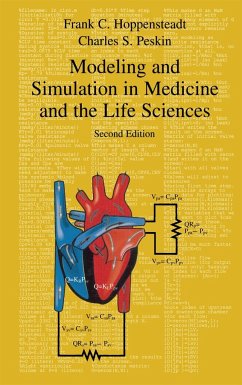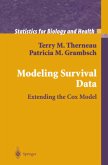The result of lectures given by the authors at New York University, the University of Utah, and Michigan State University, the book is written for students who have had only one term of calculus, but it contains material that can be used in modeling courses in applied mathematics at all levels through early graduate c ourses. Numerous exercises are given as well as solutions to selected exercises, so as to lead readers to discover interesting extensions of that material. Throughout, illustrations depict physiological processes, population biology phenomena, corresponding models, and the results of computer simulations. Topics covered range from population phenomena to demographics, genetics, epidemics and dispersal; in physiological processes, including the circulation, gas exchange in the lungs, control of cell volume, the renal counter-current multiplier mechanism, and muscle mechanics; to mechanisms of neural control. Each chapter is graded in difficulty, so a reading of the first parts ofeach provides an elementary introduction to the processes and their models
Mathematics in Medicine and the Life Sciences grew from lectures given by the authors at New York University, the University of Utah, and Michigan State University. The material is written for students who have had but one term of calculus, but it contains material that can be used in modeling courses in applied mathematics at all levels through early graduate courses. Numerous exercises are given as well, and solutions to selected exercises are included. Numerous illustrations depict physiological processes, population biology phenomena, models of them, and the results of computer simulations.
Mathematical models and methods are becoming increasingly important in medicine and the life sciences. This book provides an introduction to a wide diversity of problems ranging from population phenomena to demographics, genetics, epidemics and dispersal; in physiological processes, including the circulation, gas exchange in the lungs, control of cell volume, the renal counter-current multiplier mechanism, and muscle mechanics; to mechanisms of neural control. Each chapter is graded in difficulty, so a reading of the first parts of each provides an elementary introduction to the processes and their models. Materials that deal with the same topics but in greater depth are included later. Finally, exercises and some solutions are given to test the reader on important parts of the material in the text, or to lead the reader to the discovery of interesting extensions of that material.
Mathematics in Medicine and the Life Sciences grew from lectures given by the authors at New York University, the University of Utah, and Michigan State University. The material is written for students who have had but one term of calculus, but it contains material that can be used in modeling courses in applied mathematics at all levels through early graduate courses. Numerous exercises are given as well, and solutions to selected exercises are included. Numerous illustrations depict physiological processes, population biology phenomena, models of them, and the results of computer simulations.
Mathematical models and methods are becoming increasingly important in medicine and the life sciences. This book provides an introduction to a wide diversity of problems ranging from population phenomena to demographics, genetics, epidemics and dispersal; in physiological processes, including the circulation, gas exchange in the lungs, control of cell volume, the renal counter-current multiplier mechanism, and muscle mechanics; to mechanisms of neural control. Each chapter is graded in difficulty, so a reading of the first parts of each provides an elementary introduction to the processes and their models. Materials that deal with the same topics but in greater depth are included later. Finally, exercises and some solutions are given to test the reader on important parts of the material in the text, or to lead the reader to the discovery of interesting extensions of that material.
"This is an introductory book on mathematical modeling in the bio-sciences. It is written for mathematicians as well as for life scientists. Simple models are presented, and previous knowledge of biology is not required for understanding the book. All the essential biological background is given in the text, while basic mathematical knowledge is sufficient for reading a large part of the book. In each chapter, the material is organized in increasing order of complexity followed by exercises. Some of the exercises deal with the material of that chapter, while others are projects that extend the preceding material. Many chapters contain sections with suggestions for computing projects. Simulations are done in Matlab and computer code is included in the text...." (Miljenko Marusic, Mathematical Reviews)









